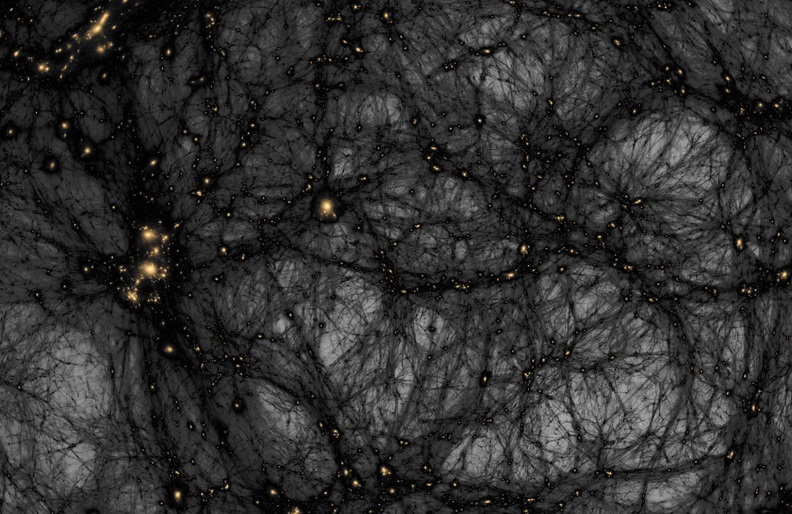For over fifty years, scientists have theorized that roughly 85% of matter in the Universe’s is made up of a mysterious, invisible mass. Since then, multiple observation campaigns have indirectly witnessed the effects that this “Dark Matter” has on the Universe. Unfortunately, all attempts to detect it so far have failed, leading scientists to propose some very interesting theories about its nature.
One such theory was offered by the late and great Stephen Hawking, who proposed that the majority of dark matter may actually be primordial black holes (PBH) smaller than a tenth of a millimeter in diameter. But after putting this theory through its most rigorous test to date, an international team of scientists led from the Kavli Institute for the Physics and Mathematics of the Universe (IPMU) has confirmed that it is not.
The team was led by Hiroko Niikura, a PhD candidate student with the Kavli IPMU, and included researchers from Japan, India and the US. As they indicate in their paper, which recently appeared in the journal Nature Astronomy, the lack of results in dark matter research led them to consider Hawking’s theory, which he first suggested in 1974.
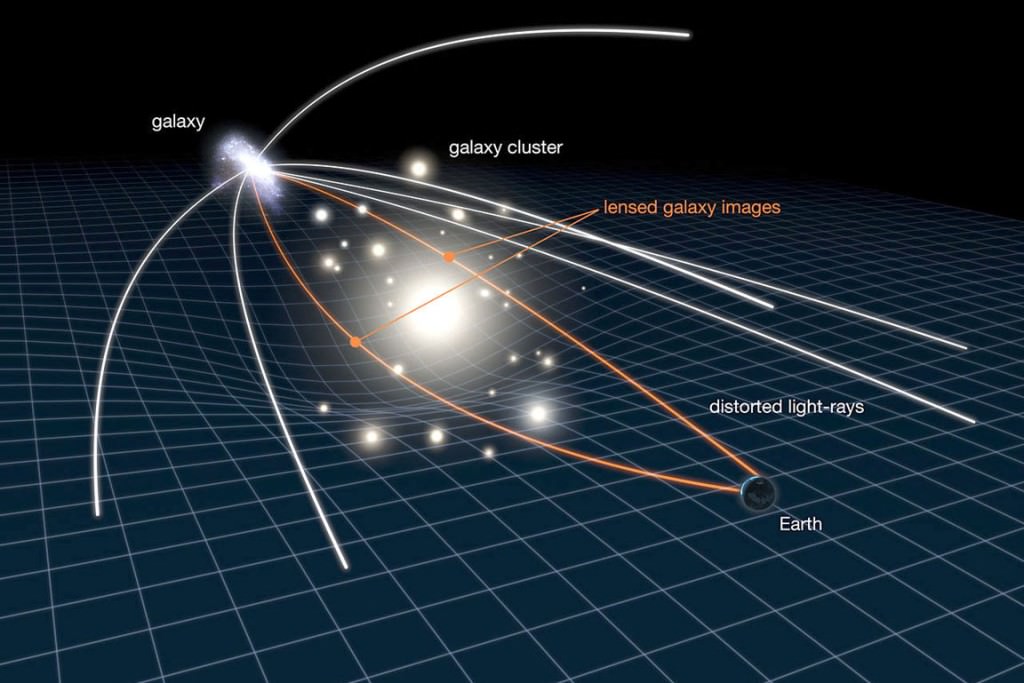
This theory posits that the majority of dark matter is made up of primordial black holes (PBH) formed shortly after the Big Bang. As Prof. Masahiro Takada, the principal investigator of the IMPU and a co-author on the paper, told Universe Today via email:
“What Prof. Hawking predicted was that, if there were little patches of overdensity in the early Universe, such patches could create black holes… Once black holes are formed, they would behave like dark matter (because it is invisible and interacts with other particles only via gravity).”
This theory is attractive because it does not rely on the existence of any exotic (but as of yet, undiscovered) particles. What’s more, shortly after Hawking proposed this idea, astrophysicists discovered that cosmic inflation could generate patches of overdensity in the early Universe due to quantum fluctuations, which could have resulted in black holes.
The team tested this theory by using the Subaru Telescope at the Mauna Kea Observatory in Hawaii to observe the neighboring Andromeda Galaxy, which is located about 2.54 million light years away. Unlike most galaxies in our cosmic neighborhood, Andromeda is one of only 100 or so that is approaching our galaxy – at a rate of 110 km per second (68 mi per second) – and is destined to collide with it.
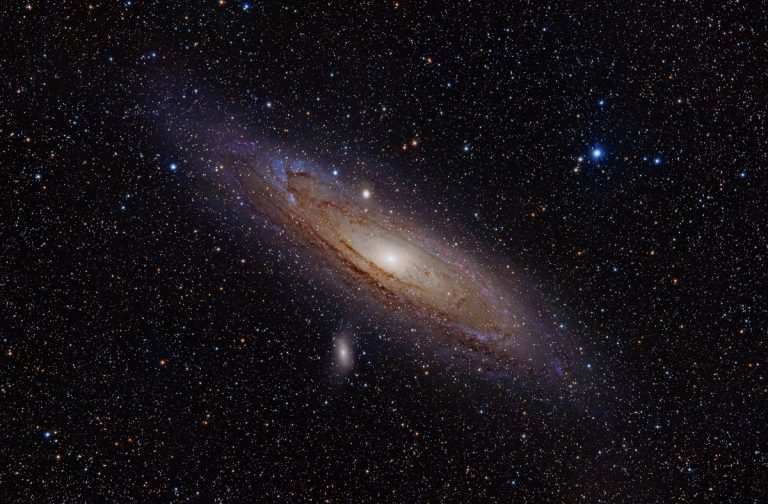
These and other factors contributed to it being the best candidates to test Hawking’s theory, explained Prof. Takada:
“The Andromeda galaxy is the largest, nearby galaxy containing many stars inside. For example, Andromeda is much bigger than the Magellan clouds that are dwarf galaxies. Hence, IF we can observe stars in Andromeda at one time, we could find microlensing events of a star, the flicker of its brightness, due to a foreground black holes that are passing in front of the star on the sky.”
If Hawking’s theory were in fact correct, the space between Andromeda and our galaxy would be filled with PBHs. This would result in a gravitational lensing effect, where the gravitational force of all these tiny black holes would cause the light rays coming from Andromeda’s stars to bend and become magnified.
This effect, which was first predicted by Einstein and his Theory of General Relativity in 1915, has been used many times by astronomers to view distant objects by taking advantage of the presence of massive objects in between them and Earth. However, the opportunities for such events are rare, requiring a fortuitous alignment between the observer, the distant object and the intervening one.
To maximize their chances of capturing an event, the researchers team used the Subaru Telescope’s Hyper Suprime-Cam digital camera, which is able to capture whole images of the Andromeda galaxy in a single shot. They also took multiple images of the galaxy to make sure that they caught any brief flickers coming from Andromeda’s stars.
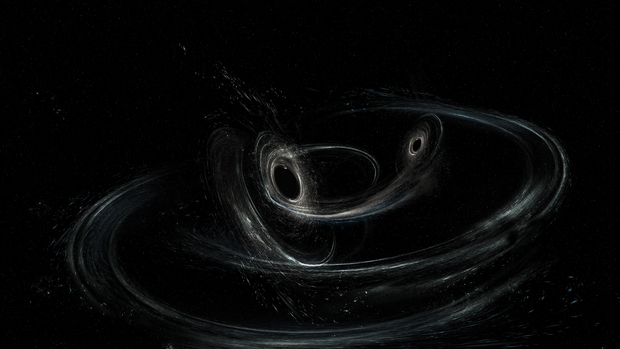
These flickers would indicate that a primordial black hole was passing in front of them, thus distorting and magnifying their light. As Prof. Takada explained:
“If dark matter is PBH rather than elementary particles such as WIMPs, it could pass in front of a star in Andromeda galaxy and cause a microlensing event, the flicker of its brightness changing with observation time. This timescale in the change of star brightness depends on mass and velocity of PBH. If PBH is dark matter, we have a good understanding of its velocity: it should move with ~200km/s in interstellar space as the rotation curve of our Milky Way or Andromeda galaxy shows.”
All told, the team took 190 consecutive images of Andromeda over the course of seven hours and examined them closely for indications of a possible event. Given the expected mass of primordial black holes, at least 1000 events were anticipated. However, the team found evidence of only one event, which would indicate that primordial black holes would constitute less than 0.1% of dark matter mass.
That being said, this one possible event (which lasted for about an hour) was a significant discovery, since it is precisely what astronomers would expect for a light-mass PBH. As Takada indicated, this could be indirect evidence of a PBH caused by cosmic inflation. At the same time, it could be evidence of stellar variability (i.e. a stellar flare), so more observations are necessary before anything can be said definitively.
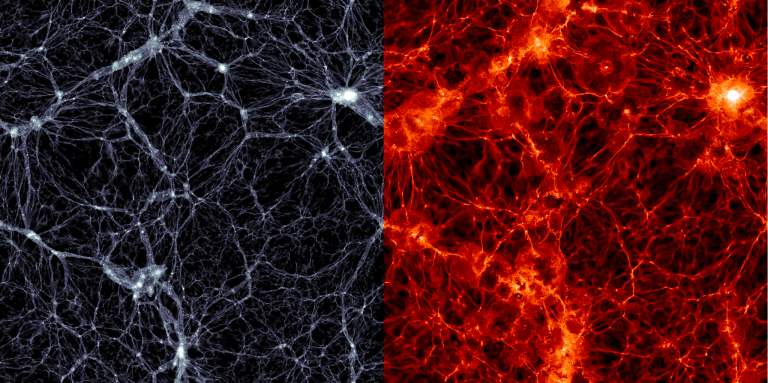
Looking ahead, the team is planning on conducting further observations of the Andromeda galaxy to confirm their analysis. They also hope to investigate a new theory that posits how binary black holes – which have become detectable by LIGO thanks to the gravitational waves events they create – might in fact be primordial black holes.
“In brief, our results can’t entirely exclude the PBH-dark matter scenario, so dark matter could be an unknown elementary particle such as Weakly Interacting Massive Particle (WIMP),” concludes Prof. Takada. “In this case, we hope that underground experiments or accelerator experiments such as LHC will find such dark matter particles.”
In the meantime, the search for elusive dark matter continues! And much like the first-ever detection of gravitational waves, this discovery will trigger a revolution in the field of astronomy. And as Takada said, “it would be a Novel Prize discovery!”
Further Reading: Kavli IPMU, Nature Astronomy

